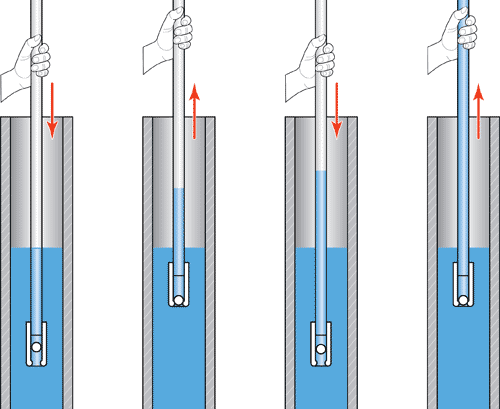Operating Principles
The Inertial Pump is a groundwater sampling pump, simply consisting of a riser tube with a one-way valve at the foot. The valve allows water to enter the tubing as it is pushed downward, and retains the water when the tubing is pulled upward again. The inertia of the water itself provides the force to carry it up to the surface.
Pump Operation
- Attach the footvalve to the tubing by hand-threading the selftapping footvalve onto the tubing as far as it can go (at least 1/2" or 12 mm). This provides a secure, watertight grip.
- Lower the tubing (footvalve end first) into the well to the desired pumping depth.
- Repeatedly lower and raise the tubing and footvalve approximately 6" - 12" (15 - 30 cm). A slug of water enters the tubing on the downward stroke and is retained as the valve closes on the upward stroke. This enables the water to gradually rise in the tubing and discharge at surface.




